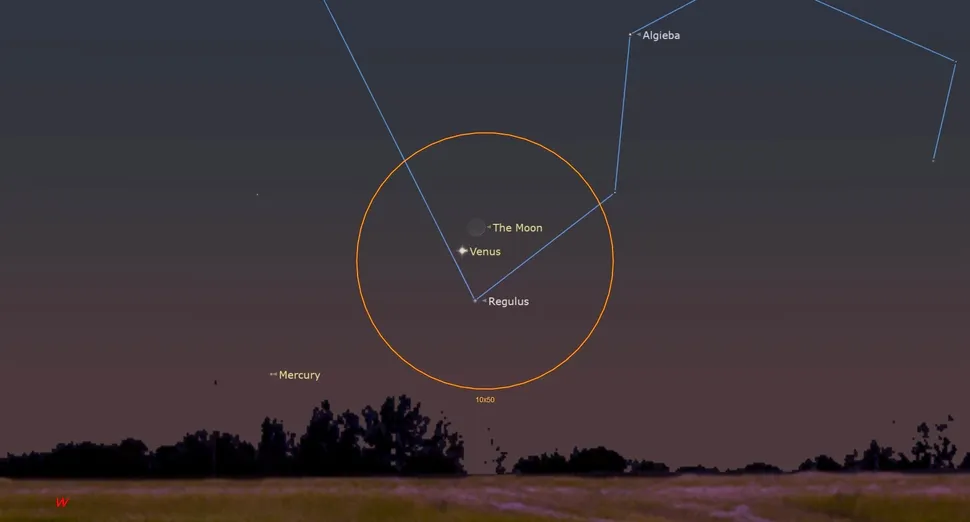Why the challenge? Venus will be only 17 degrees east of the sun and the moon just 36 hours past new when it passes closest to Venus in the sky. You may need binoculars, and Venus might have to guide you to the extremely thin lunar crescent’s location. Ironically, Venus at magnitude -3.9 (shining 10 times brighter than Sirius, the brightest star) may be an easier object to spot than the moon.
The moon always makes for a rewarding skywatching sight. If you want to get a closer look at the moon, Venus or any of the planets of the night sky, be sure to take a look at our guides to the best telescopes and best binoculars.
And if you want to photograph parings of the moon and Venus or any other planet, we have tips for how to photograph the moon and how to photograph the planets, as well as guides to the best cameras for astrophotography and best lenses for astrophotography.
One fist up at sunset
From many years of observing experience, I can confidently state that a 36 hour-old moon can become visible a few minutes before sunset if conditions are ideal and you know exactly where to look. But at this event in the eastern U.S., the moon is not 17 degrees above the sun but 17 degrees to its upper left, placing the moon nearer to the horizon and worsening the viewing prospects considerably.
At sunset, the moon will be situated at a point 10 degrees north of due west and 9 degrees above the horizon. As we have pointed out on many other occasions, 10 degrees is roughly equivalent to the apparent width of your clenched fist held at arm’s length. So. around the time of sunset the moon will appear about “one fist” above the horizon.
You can accentuate your chances of picking up both moon and Venus right after sunset by first scanning around the western sky with binoculars; once you sight them, getting a glimpse of the pair with your unaided eyes should be easier, especially as the twilight deepens.
A half hour after sunset, the moon and Venus will hang about five degrees above the west-northwest horizon. Venus, should appear as a bright, white dot just one-half degree to the moon’s lower left rim, against the bright twilight background.
Moon/planet gap appears larger farther west
Going farther to the west, the gap between the moon and Venus will widen and their orientation relative to each other will look different. Along the Pacific coast, the moon and planet will be separated by slightly more than one degree and Venus will appear to the lower right of the moon in the twilight sky. Those situated on high ground with an ocean view will have a box-seat ticket to this close conjunction.
But this event — as striking as it is — is not one for the masses. Good/lucky observers will spot the moon and Venus within a half hour of sunset very low to the west-northwest horizon, while inexperienced/unlucky observers might miss them.
Good preparation, an unobstructed west-northwest horizon and binoculars will certainly improve your chances of sighting this lovely celestial tableau.
Source: https://www.space.com/moon-venus-august-5-2024



